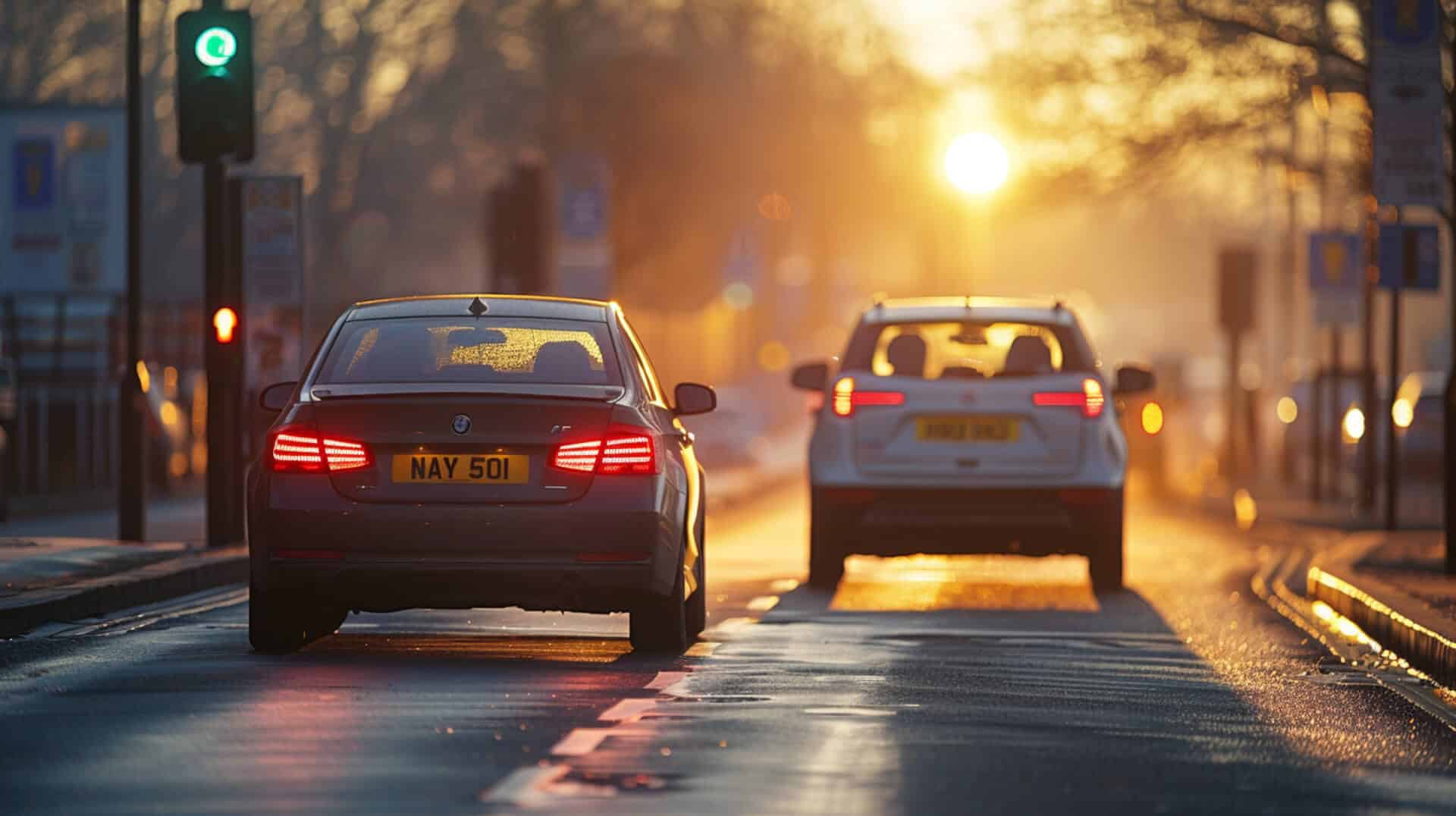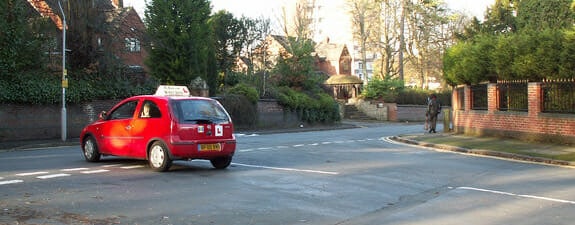
Understanding DVSA Guidelines for Personal Vehicles in Tests
When considering using your own car for the driving test, it’s essential to familiarise yourself with the Driver and Vehicle Standards Agency (DVSA) guidelines. These regulations ensure that your vehicle is suitable and safe for both you and the examiner during the test. Let’s delve into the specifics of these requirements and how you can ensure compliance.
What Are the DVSA Requirements for Using a Personal Car in the Driving Test?
The DVSA mandates that any personal vehicle used in a driving test must be roadworthy, insured, and equipped with necessary features such as L-plates, a rear-view mirror for the examiner, and a functional speedometer. It should also be free from dashboard warning lights and have a valid MOT certification if applicable.
Why Is It Important to Adhere to These Guidelines?
Compliance with DVSA guidelines is crucial for safety reasons and to avoid any complications on the test day. A vehicle that doesn’t meet these standards could lead to the cancellation of your test, resulting in lost time and fees.
How Can You Verify That Your Vehicle Meets DVSA Standards?
You can verify your vehicle’s compliance by conducting a pre-test check based on the DVSA’s checklist. This includes ensuring all lights work, the tyres have legal tread depth, and there are no dashboard warning lights illuminated.
Where Can You Find the Most Up-to-Date DVSA Guidelines?
The most current DVSA guidelines can be found on the official DVSA website. We at Smart Drive UK recommend regularly checking this resource for any updates or changes to ensure your vehicle remains compliant for the driving test.
What Constitutes a Roadworthy Vehicle According to the DVSA?
A roadworthy vehicle, as defined by the DVSA, must be in good working order and condition. This includes having:
- Functional lights, including headlights, brake lights, and indicators.
- Legal tyre tread depth of at least 1.6mm across the central three-quarters of the tyre.
- No dashboard warning lights indicating a problem.
- An up-to-date MOT certification if the vehicle is over three years old.
Checking Your Vehicle for Safety Recalls
To check your vehicle for any safety recalls, you can visit the manufacturer’s website or the DVSA’s online recall checker. It’s crucial to address any recalls before the test date to ensure your vehicle is considered safe for use.
Safety Features Examiners Look For
During the test, examiners will look for specific safety features, including:
- Functional seat belts for all occupants.
- Properly adjusted head restraints to minimise the risk of whiplash.
- A clear view through all mirrors and windows.
- An additional rear-view mirror for the examiner’s use.
By ensuring your vehicle meets these roadworthiness and safety standards, you’re taking a significant step towards a successful driving test experience.
The Importance of Proper Insurance Coverage for Learner Drivers

Navigating the insurance landscape as a learner driver can be complex, especially when planning to use your own car for the driving test. At Smart Drive UK, we emphasise the critical nature of securing the right insurance coverage to ensure you’re fully prepared and protected on your test day.
What Type of Insurance Do You Need?
When using your own car for the driving test, it’s essential to have insurance coverage that specifically includes permission for you to drive the vehicle under examination conditions. This typically means:
- Comprehensive coverage that extends to learner drivers.
- A policy that explicitly states the car can be used for the purpose of a driving test.
How Insurance Coverage Differs for Learner Drivers
Insurance for learner drivers often comes with specific conditions, reflecting the increased risk associated with inexperienced drivers. This might include:
- Higher premiums.
- The necessity for a qualified driver to accompany the learner at all times, except during the test.
Why Comprehensive Coverage is Recommended
Comprehensive insurance is recommended for the driving test because it provides the most extensive level of protection, covering damage to your vehicle and others in case of an accident. This ensures peace of mind for both you and the examiner.
Finding Insurance Providers That Offer Learner Driver Coverage
Several insurance companies specialise in or offer products tailored for learner drivers. To find the best fit for your needs:
- Compare quotes from multiple providers to ensure you’re getting a competitive rate.
- Check reviews and ratings to gauge customer satisfaction and the quality of service.
- Consult with an insurance broker if you need assistance navigating the options.
Removing Unnecessary Items
Before the test, remove all unnecessary items from your car. This includes:
- Personal belongings that could obstruct the examiner’s view or movement.
- Any decorative items that might distract during the test.
Creating a Smoke-Free Environment
A smoke-free environment is mandatory. Ensure:
- There has been no smoking in the vehicle prior to the test to maintain a clean air environment.
Essential Documents and Items to Bring on Test Day

Preparing for your driving test involves not just practical readiness but also ensuring you have all necessary documents and items for the day. At Smart Drive UK, we stress the importance of this preparation to avoid any last-minute hitches that could delay or disrupt your test.
Required Documents
On the day of your driving test, you must present:
- A valid UK driving licence: This is essential for identification and to confirm your eligibility to take the test.
- Your theory test pass certificate: To prove you have passed the necessary preliminary tests.
- Confirmation of your test appointment: Although not always asked for, having this on hand can help resolve any scheduling confusions.
Ensuring All Requirements Are Met
Before leaving for your test, double-check that you have all these documents. It’s a good practice to gather them the night before to reduce stress on the day of the test.
The Importance of Double-Checking
Double-checking these items ensures that you won’t be turned away for lacking the necessary paperwork, which could result in having to rebook and pay for another test.
Navigating Exclusions: Vehicles Not Permitted in the Driving Test

When preparing to use your own car for the driving test, it’s crucial to be aware of the specific types of vehicles that are not permitted. At Smart Drive UK, we aim to ensure you’re fully informed and prepared, helping you navigate any potential exclusions and understand the reasons behind them.
Types of Vehicles Typically Excluded
Certain vehicles are deemed unsuitable for the driving test due to factors like limited visibility or safety concerns. These include:
- Vehicles with significant rear window obstructions.
- Cars subject to safety recalls without proof of the required corrective action.
- Models with known visibility issues for the examiner or driver.
Ensuring Your Vehicle Isn’t Subject to These Exclusions
To ensure your vehicle isn’t subject to these exclusions:
- Check for any outstanding recalls on your vehicle’s manufacturer website.
- Verify visibility for both you and the examiner, particularly through the rear window.
- Consult the DVSA’s list of excluded vehicles for any specific models that are not allowed.
Utilising Driving Aids During the Test: What’s Allowed?
In today’s driving tests, the integration of modern technology and driving aids has become increasingly common.
Permissible Driving Aids
The DVSA allows certain driving aids during the test, provided they are used appropriately and do not replace manual driving skills. These include:
- Electronic handbrakes: Allowed, but you should demonstrate manual control when necessary.
- Parking sensors and cameras: Permitted, but you must also show proficiency in using mirrors and checking blind spots.
Reaching Out to Smart Drive UK
To book your lessons or learn more about how we can assist you, visit our website or contact us directly through phone or email. Our friendly team is ready to answer any questions and guide you through the booking process. Start your driving journey with Smart Drive UK today, and take the first step towards passing your driving test with confidence.



